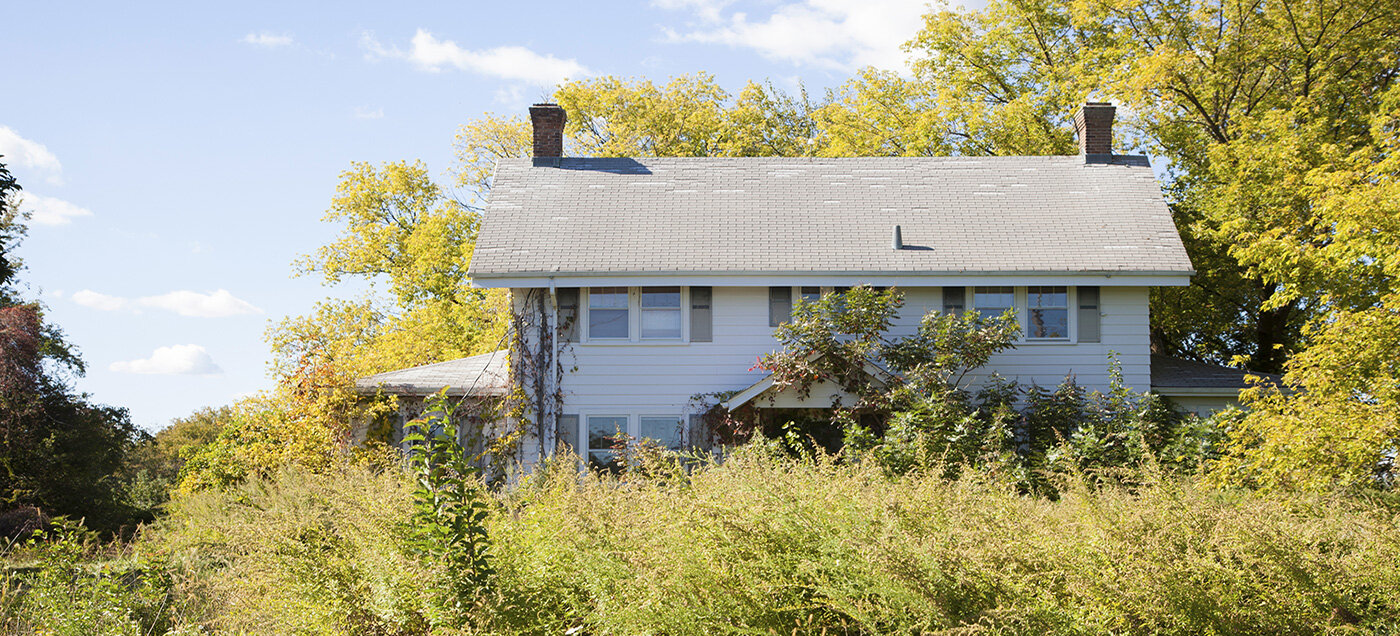Residential Real Estate News

Vacant Zombie Homes Dip in Q3 as Foreclosure Moratorium Ends in U.S.
Residential News » Detroit Edition | By Michael Gerrity | September 9, 2021 9:03 AM ET
According to ATTOM Data's third-quarter 2021 Vacant Property and Zombie Foreclosure Report, 1,332,706 residential properties in the United States sit vacant. That represents 1.4 percent, or one in 74 homes, across the nation.
The report reveals that 215,495 properties are in the process of foreclosure in the third quarter of this year, down 3.7 percent from the second quarter of 2021 and down 0.2 percent from the third quarter of 2020. Among those pre-foreclosure properties, 7,538 sit vacant in the third quarter of 2021, down quarterly by 6.7 percent and annually by 5.3 percent.
The portion of pre-foreclosure properties that have been abandoned into zombie status dropped slightly, from 3.6 percent in the second quarter of 2021 to 3.5 percent in the third quarter of 2021.
Among the nation's total stock of 98.4 million residential properties, the portion represented by zombie foreclosures remains miniscule. Just one of every 13,060 homes in the third quarter sat empty in the foreclosure process, down from one in 12,256 in the second quarter of 2021 and from one in 12,486 in the third quarter of last year.
The third-quarter zombie foreclosure numbers reflect one of many measures showing how strong the U.S. housing market remains, but also one likely to face a downturn to varying degrees across the country over the coming year.
The decade-long, national home-price boom has continued roaring ahead in 2021, with double-digit annual gains throughout most of the country and almost no blight stemming from vacant properties in foreclosure. That has happened despite economic damage to major sectors of the U.S. economy connected to the Coronavirus pandemic that hit early last year. But the number of foreclosures - and with it, the number sitting vacant - is almost certain to increase because the federal government recently lifted a 15-month moratorium that had prevented lenders from taking back properties from homeowners who fell far behind on mortgage payments during the pandemic. An estimated 1.5 million to 2 million homeowners were in some kind of forbearance when the moratorium ended in July 2021.
"Vacant properties in foreclosure, and the resulting potential for neighborhood decay, continue to be a non-issue overall in most of the country. But that could easily change over the coming months as lenders are now free to take back properties from delinquent homeowners," said Todd Teta, chief product officer with ATTOM. "How much, how fast and where that happens will depend on how different banks approach the situation. Some may decide to vigorously pursue foreclosures to recoup losses from the pandemic while others give homeowners more time to get back on their feet. But it's hard to imagine that zombie foreclosures will continue to be so few and far between across the national landscape."
Zombie foreclosures down in 31 states
A total of 7,538 residential properties facing possible foreclosure have been vacated by their owners nationwide in the third quarter of 2021, down from 8,078 in the second quarter of 2021 and from 7,961 in the third quarter of 2020. The number decreased, quarter over quarter as well as year over year, in 31 states.
Among states with at least 50 zombie foreclosures during the third quarter of 2021, the biggest decreases from the second quarter to the third quarter of this year are in Maryland (zombie foreclosures down 39 percent, from 151 to 92), Massachusetts (down 26 percent, from 89 to 66), New Mexico (down 24 percent, from 85 to 65), Connecticut (down 12 percent from 75 to 66), Florida (down 11 percent, from 1,021 to 912) and Maine (down 11 percent, from 66 to 59).
Largest zombie property counts remain in Northeast and Midwest
New York continues to have the highest number of zombie properties in the third quarter of 2021 (2,053), followed by Ohio (939), Florida (912), Illinois (805) and Pennsylvania (366).

"There are two reasons we might see an increase in zombie properties as we approach Halloween," said Rick Sharga, Executive Vice President of RealtyTrac, an ATTOM Company. "First, the CFPB has authorized lenders to pursue foreclosure proceedings on vacant and abandoned homes now that the government's moratorium is over. Second, they've also given the go-ahead to re-start the foreclosure process on loans that were already 120 days delinquent prior to the moratorium, and it's not unlikely that over the past 15 months many of those financially-distressed homeowners have vacated their properties."
Overall vacancy rates continue dropping most in midwestern and southern states
Vacancy rates for all residential properties in the U.S. declined to 1.35 percent in the third quarter of 2021 (one in 74 properties), from 1.42 percent in the second quarter of 2021 (one in 70) and 1.58 percent in the third quarter of last year (one in 63). States with the biggest quarterly decreases in overall vacancy rates are Oregon (down from 1.8 percent of all homes in the second quarter of 2021 to 1.3 percent in the third quarter), Maryland (down from 1.7 percent to 1.1 percent), Wisconsin (down from 1.4 percent to 1 percent), Mississippi (down from 2.2 percent to 1.9 percent) and Minnesota (down from 1.5 percent to 1.2 percent).
Other high-level findings from the third-quarter 2021 data:
- Among 162 metropolitan statistical areas with at least 100,000 residential properties and at least 100 properties facing possible foreclosure, the highest zombie rates in the third quarter of 2021 are in Portland, OR (13.7 percent of properties in the foreclosure process are vacant); Fort Wayne, IN (12.9 percent); Detroit, MI (11.9 percent); Cleveland, OH (11.8 percent); and Honolulu, HI (11.3 percent).
- Aside from Portland, Cleveland and Detroit, the highest zombie-foreclosure rates in major metro areas with at least 500,000 residential properties and at least 100 properties facing foreclosure in the third quarter of 2021 are in Atlanta, GA (10.1 percent of properties in the foreclosure process are vacant) and Indianapolis, IN (8.3 percent).
- Among the 27.5 million investor-owned homes throughout the U.S. in the third quarter of 2021, about 933,500, or 3.4 percent, are vacant. The highest levels of vacant investor-owned homes are in Indiana (6.9 percent), Tennessee (6.1 percent), Kansas (5.9 percent), Oklahoma (5.4 percent) and Ohio (5.2 percent).
- Among the roughly 4,800 bank-owned homes in the U.S. during the third quarter of 2021, 17.8 percent are vacant. In states with at least 50 bank-owned homes, the largest percentages sitting vacant are in Kentucky (40.9 percent), Ohio (37.2 percent), Missouri (35.3 percent), Illinois (25.7 percent) and Michigan (24.2 percent).
- The highest zombie-foreclosure rates among counties with at least 500 properties in the foreclosure process during the third quarter of 2021 are in Cuyahoga County (Cleveland), OH (13.3 percent of pre-foreclosure homes are empty); Broome County (Binghamton), NY (11.9 percent); Pinellas County (Clearwater), FL (11.4 percent); Onondaga County (Syracuse), NY (10.6 percent) and St. Clair County, IL (outside St. Louis, MO) (9 percent).
- The lowest zombie rates among counties with at least 500 properties in foreclosure in the third quarter of 2021 are in Alameda County (Oakland), CA (0.4 percent of pre-foreclosure homes are empty); Mercer County (Trenton), NJ (0.4 percent); Atlantic County (Atlantic City), NJ (0.5 percent); Bergen County, NJ (outside New York, NY), NY (0.6 percent) and Mecklenburg County (Charlotte), NC (0.7 percent).
- Among counties with at least 50,000 residential properties, those with the largest portion of total homes in zombie foreclosure status in the third quarter of 2021 are Broome County (Binghamton), NY (one of every 659 properties); Cuyahoga County (Cleveland), OH (one in 879); Suffolk County (eastern Long Island), NY (one in 1,217) Peoria County, IL (one in 1,236) and Bronx County, NY (one in 1,418).
Sign Up Free | The WPJ Weekly Newsletter
Relevant real estate news.
Actionable market intelligence.
Right to your inbox every week.
Real Estate Listings Showcase
Related News Stories
Residential Real Estate Headlines
- U.S. New-Home Sales Surge in August as Mortgage Rates Ease
- Despite Increased Foreign Buyer Activity, Miami Residential Sales Dip 11 Percent in August
- California Home Sales Enjoy Modest Uptick as Mortgage Rates Ease
- U.S. Home-Flipping Profits Sink to Lowest Level Since 2008 Financial Crisis as Costs Climb
- Why the World's Rich Are Flocking to Europe in 2025
- Federal Reserve Delivers First Rate Cut of 2025 as Mortgage Relief Proves Limited
- Homebuilder Sentiment Holds Steady in U.S. as Rate-Cut Bets Lift Outlook
- U.S. Mortgage Rates Experience Sharpest Weekly Drop in Over a Year
- U.S. Foreclosures Rise for Sixth Straight Month as Affordability Pressures Mount
- Black U.S. Homeownership Rate Falls to Two-Year Low as Job Losses Mount
- Las Vegas Home Prices Flatten as Listings Surge, Sales Slow
- Cooling Miami Housing Market Sees 16 Percent Annual Sales Drop in July
- U.S. Mortgage Delinquencies Uptick in June Amid Regional Pressures
- California, Florida Top U.S. Housing Markets Most at Risk of Downturn
- 30-Year Mortgage Drops to 6.56 Percent in Late August, Lowest Since October 2024
- Investors Maintain Elevated Role in U.S. Housing Market Despite Slight Pullback
- Pending Home Sales Show Mixed Signals as U.S. Buyers Remain Cautious
- Canadian Home Sales Extend Recovery in July
- U.S. Home Sales Rise in July as Buyers Gain More Bargaining Power
- Zombie Foreclosures Edge Up Across U.S.
- 2.6 Million Homes at Wildfire Risk Across 14 Western States in 2025
- One in Five Americans Willing to Trade Personal Safety for Home Affordability
- U.S. Home Price Growth Slows as Affordability Pressures Mount in 2025
- U.S. Mortgage Rates Dip to Four Month Low in Early August
- U.S. Mortgage Applications Rise in Late July, Breaking Four-Week Slump
- Hong Kong's Housing Market Stuck in Stalemate as Bulls and Bears Face Off
- U.S. Condo Market Struggles in 2025
- U.S. Pending Home Sales Remain Sluggish in June
- Los Angeles Area Wildfires Destroyed Nearly $52 Billion in Homes Last January
- Greater Palm Beach Area Residential Sales Slip in June Amid Growing Inventory
- Economic Resilience Lifts U.S. Housing Outlook Going Forward
- New Home Sales Stagnate as Affordability Struggles Continue in America
- U.S. Housing Market Slips in June as Prices Hit New Highs
- Florida, California Continue to Reign Supreme as America's Ultraluxury Housing Markets
- Caribbean Housing Market Evolves into Global Second-Home Hotspot
- U.S. Home Sales See Highest June Cancellation Rate on Record
- Orlando Housing Market Cools in June as Listings Slide, Sales Slow
- Private Credit Surges in 2025 as Real Estate Developers Bypass Banks
- U.S. Condo Market Suffers Sharpest Price Drops in Over a Decade as Buyers Retreat
- Rising Taxes, Insurance Costs Undermine the Stability of U.S. Homeownership







